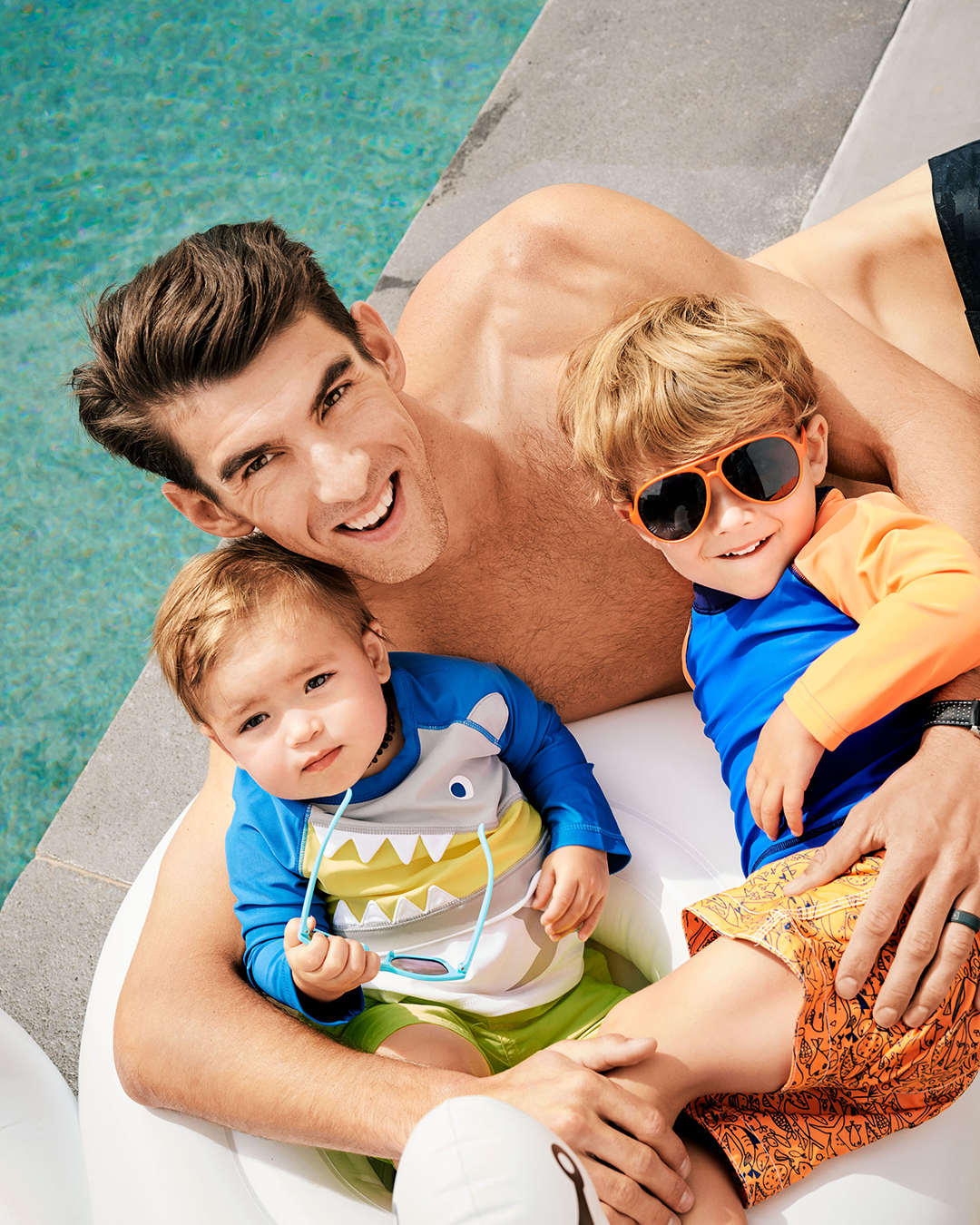
You know your child needs swimming lessons. But what can you do between sessions so he'll grow up to be comfortable and competent in the water?
Consider this advice from Cathy Bennett, Michael Phelps's first swimming instructor and program director of the Michael Phelps Foundation, which helps kids become confident swimmers using its signature IM program. Named after Phelps's signature event, the individual medley, the IM program offers water-safety courses and recreational pool activities to Boys & Girls Club members and Special Olympics athletes around the world.
Take advantage of bathtime.
The tub is the ideal place to acclimate your baby or young child to water. (But never leave her unattended—not even for a second.) Gently tip her on her back to help her get used to submerging her ears underwater. You can also familiarize her with getting her face wet by using a cup or a watering can to slowly pour water on the back of her head, then slowly move to the front of her face.
With your toddler or preschooler, fill the tub so the water is a little deeper. Have her flip onto her stomach to pretend to be an alligator or a turtle, or get her fully submerged to be a fish. She can practice floating and experience the feeling of buoyancy by rolling over, putting her head back, and relaxing.
"Floating on the back is one of the first water skills kids should learn," says Bennett. "If your child is ever tired or in distress in the water, this position can help her breathe and relax."
Teach him how to breathe.
Have your child breathe in deeply through his nose before he goes underwater. Tell him to make sure the air goes down into his lungs and doesn't get stuck in his cheeks. Then have him close his lips and hum to blow bubbles out through his nose as he emerges.
Discuss different bodies of water.
Whenever you pass a lake, an ocean, a river, or a pond, talk about what makes it unlike a pool. Explain that a pool has a hard, consistent floor, while natural waters may have a sandy bottom, which can feel squishy on your feet, or a rocky bottom that may call for swim shoes. Describe how oceans and rivers have strong currents that can move you without your noticing, making swimming difficult.
Give her some space.
If your child is younger than 7 or isn't a confident swimmer, join her in the water at arm's length—but be handsoff.
"You want her to know what the constant pressure of water feels like on her body," says Bennett. You can make pool time even more fun by seeing if she can swim down to grab a ring on the bottom of the shallow end, jump from the side of the pool into your arms, or climb out of the pool without using the stairs or a ladder.
Parents Magazine
